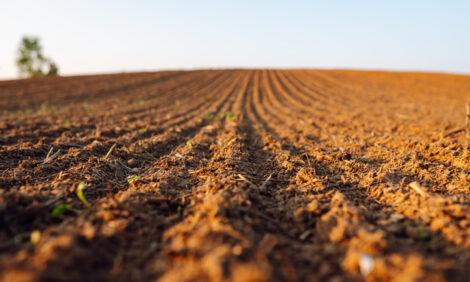



US Pork Outlook Report - April 2002
By U.S.D.A., Economic Research Service - This article is an extract from the April 2002: Livestock, Dairy and Poultry Situation and Outlook Report, highlighting Pork Industry data. The report highlights that hog production is running above expectations leading to the lower prices which are being seen.| U.S. Meat Production To Increase |

|
The March Quarterly Hogs and Pigs Report reported a 2-percent increase in the market hog inventory and producers’ intentions to have 1 percent more sows farrow during March-August than a year ago.
Projected meat exports in 2002 are projected to fall about 2 percent from last year, as all major meats are expected to register declines. Larger meat production and lower exports are pressuring domestic prices downward.
Hog prices have weakened and are expected to average about $40 per hundredweight (cwt) for the year, $6 below 2001.
| Hog Production Up Slightly, Prices Down |
The Quarterly Hogs and Pigs Report released
March 28 indicated that inventories and farrowing
intentions were in line with expectations. Pork
production in 2002 is expected to be about 1
percent above last year. Hog prices are expected to
average about $40 per cwt, compared with $46 in
2001. Hog and pork prices in early 2002 are
running below earlier expectations.
| Pork Production Nearly Unchanged in First Half |
Commercial pork production in the first quarter of
2002 was fractionally lower than a year earlier.
The 2-percent lower expected hog slaughter was
partially offset by a 1-pound gain in the average
dressed weight. Based on the June-August 2001
pig crop and larger expected imports from Canada,
second-quarter hog slaughter is expected to be
slightly below a year earlier. Heavier dressed
weights are expected to hold production about
equal with a year ago.
| Hogs and Pigs Report Points to Larger Pig Crop in 2002 |
The Quarterly Hogs and Pigs Report released
March 28 supported both industry expectations and
last December’s quarterly report in pointing to a
larger pig crop in 2002.
The March report showed
that 3 percent more sows farrowed in the
December-February quarter than in the same period
a year ago. Pigs per litter in the December-February
quarter were about the same as in the first
quarter last year, with the resulting pig crop about 3
percent ahead of the same period a year ago. The
larger pig crop, plus larger expected live imports
from Canada, point to a third-quarter 2002
slaughter about 3 percent greater than a year
earlier. Additionally, heavier dressed weights are
expected to lift third-quarter 2002 production about
4 percent above third-quarter 2001 production.
The March report showed producers’ intentions to
increase March-May farrowings 1 percent above a
year ago, essentially unchanged from the first
intentions published in December. If producers
follow their intentions, and pigs per litter decline
slightly as expected, the March-May pig crop will
be only slightly larger than a year ago. The pig
crop plus anticipated live imports from Canada
imply a fourth-quarter 2002 slaughter only slightly
greater than a year earlier. Heavier dressed weights in
the fourth quarter are expected to increase
production nearly 1 percent above a year earlier.
Farrowing intentions for the June-August pig crop
were up 1 percent from last year. If producers’
intentions and expectations for a slightly improved
year-over-year litter productivity rate are both met,
the June-August pig crop would be about 1 percent
higher than a year ago. The pig crop, plus expected
imports of live animals from Canada, point to a 1-
to-2-percent larger first quarter 2003 slaughter.
In summary, the March Quarterly Hogs and Pigs
Report, and USDA forecasts suggest that around 1
percent more sows will farrow in 2002. Higher
farrowings and little change in pigs per litter are
expected to result in a slightly larger 2002 pig crop.
Larger pig crops and increased live imports from
Canada should lift second-half 2002 slaughter
slightly above a year ago and suggest higher
slaughter into 2003. Heavier anticipated dressed
weights, due to continued moderate feed costs and
use of improved genetics, should increase 2002
pork production about 1 percent over last year.
| Hog Prices Lower on Weaker Demand for Pork Products |
First-quarter hog prices averaged $39.43 per cwt,
down 8 percent from a year ago. The lower hog
prices reflect the weaker market for pork products.
Since the beginning of March, the cutout has fallen
more than 12 percent. Hog prices are expected to
average in the low $40s in the second and third
quarters and then fall to the mid $30s in the fourth
quarter. Based on current expectations, hog prices
in 2002 should average near $40 per cwt, 13
percent lower than in 2001.
Weakness on the live side of the market appears to
be driven by lower consumer demand for pork
products, as evidenced by declines in pork carcass
cutout values since the end of February. Factors
contributing to the apparent reduction in consumer
demand for pork include the uncertainty that
accompanies economic slow-downs and greater
first-quarter beef and poultry supplies, both of
which compete with pork for consumers’ food
dollars. Prices are expected to be relatively weak
in coming months due to continued abundant
supplies of such competing meats as poultry and
beef, as herd expansion is postponed for another
year.
Although first-quarter retail pork prices are
expected to be above a year ago, retail prices for
the remainder of 2002 are expected to average
below last year, reflecting greater product supplies
and competition from beef and poultry.
| Live Imports Very Strong |
USDA’s Animal and Plant Health Inspection
Service data on live hog imports from Canada
suggest that first-quarter imports were more than
18 percent ahead of a year ago, and that more than
60 percent of the imported animals are feeder pigs.
More information including all the figures and graphs is avaiable in the full 9 page report, see below for details.
Links
For more information view the full Livestock, Dairy and Poultry Situation and Outlook (pdf)Source: Livestock, Dairy and Poultry Situation and Outlook - U.S. Department of Agriculture, Economic Research Service - April 16, 2002







